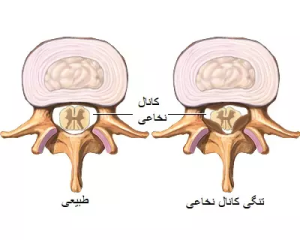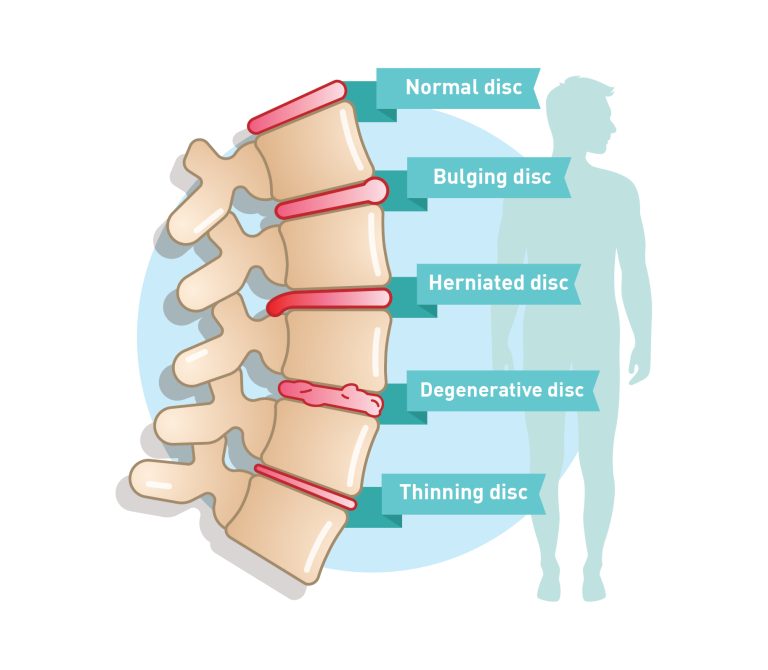Diseases and disorders of the spine
The spine is an important part of the human skeletal structure and is composed of vertebrae, discs, muscles, and different types of tissues.
Spine diseases can cause different problems in each of these components. Some spine diseases are discussed below:
Arthritis (Osteoarthritis):
Arthritis is a degenerative disease that destroys the cartilage of the spine. This disease causes stiffness and pain in the joints and can lead to reduced movement and flexibility of the spine.
ا Scoliosis:
This disease is known as an abnormal deviation in the spine. In scoliosis, the spine deviates into an “S” or “C” curve, which can cause pain and growth delays in children.
Encephalitis (Herniated Disc):
The discs between the vertebrae naturally act as blades. Encephalitis means that the central part of this disc is out of place and compression of the spinal nerves. This may lead to severe pain, headaches, and movement disorders.
Spondylosis):
This disease is related to the gradual destruction of vertebrae and discs of the spine due to aging and frequent pressures of people. This may be accompanied by severe pain in the spinal region, loss of motor power, and worsening symptoms of spondylosis.
Ankylosing spondylitis (Ankylosing Spondylitis):
This disease is a type of chronic inflammation that basically affects the lower parts of the spine and muscles and their cohesion. The result of this disease can be in the form of fusion of the vertebrae and cause movement limitation in the spine.
(Stenosis):
In this disease, the cerebral canal (the canal in which the spinal cord is located) narrows. This can lead to symptoms such as nerve pain, fatigue, and muscle weakness.
(Vertebral Fracture):
Spinal fractures can be caused by severe trauma, loss of bone strength, or bone disease. These fractures can lead to symptoms such as severe pain and inability to move.
The treatment of spine diseases usually varies depending on the type of disease and its severity. Possible treatments include lifestyle changes, physical therapy, medications, injections, and, in more severe cases, surgery. Choosing the right treatment should be done by a specialist doctor.
Spinal canal stenosis،It is a disease of the spine in which the canal through which the spinal cord and cranial nerves pass narrows.. This disease can also be known as spinal stenosis. Spinal stenosis can occur in any part of the spine, but it occurs mostly in cervical and lumbar regions. In the following, a complete explanation about spinal canal stenosis is provided:
Causes of spinal canal stenosis:
aging: With aging, the bones and tissues around the spinal canal may undergo changes such as compression and deformation, which causes narrowing of the canal.
Compact discs: Compressed discs or bulging discs can put more pressure on the spinal canal and cause its narrowing.
Malignant masses: The presence of malignant masses such as tumors or benign compounds in the area of the spinal canal can lead to its narrowing.
Stenosis of the squirrel canal: This type of spinal canal stenosis is caused by the increase in the size of the canal space when sleeping in a narrow and combined position.
Symptoms of spinal canal stenosis:
Symptoms of spinal stenosis may include the following:
Pain in the back or neck area
Pain and tension in the muscles
Feeling cold and pale in the limbs
Fainting, falling and muscle weakness
Difficulty moving and lowering the limbs
Neurological complications such as inability to control urine and stool, and sensory disturbances
Diagnosing spinal canal stenosis requires tests and medical images, among others:
Imaging, including Spinal MRI and Computed Tomography (CT Scan)
Neurological tests such as neurological tests and motor tests
Treatment of spinal canal stenosis:
Treatment of spinal stenosis may include the following:
Medicines to reduce pain and inflammation
Physiotherapy and strengthening exercises
Ansons injections : substances that are injected into the spinal canal space to reduce pressure)
surgery: In severe cases, surgery is performed to relieve pressure from the spinal canal and reconstruct it. This surgery includes laminectomy, kyphoplasty, and stabilization of vertebrae (spinal fusion).
Diagnosis and treatment of spinal stenosis requires consultation with a spine specialist. Your doctor will determine the appropriate treatment plan by examining the details of your case and your medical history.


